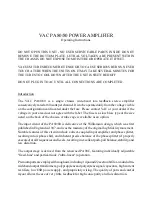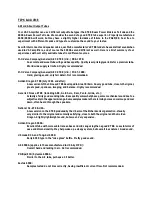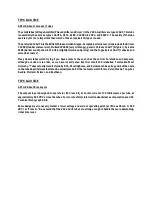
VAC PA80/80 POWER AMPLIFIER
Operating Instructions
DO NOT OPEN THIS UNIT - NO USER SERVICEABLE PARTS INSIDE. DO NOT
REMOVE THE BOTTOM PLATE. LETHAL VOLTAGES ARE PRESENT WITHIN
THE CHASSIS. DO NOT EXPOSE TO MOISTURE OR OPERATE IT IF WET.
VACUUM TUBES BECOME HOT ENOUGH TO CAUSE SERIOUS BURNS. NEVER
TOUCH A TUBE WHEN THE UNIT IS ON. IT MAY TAKE SEVERAL MINUTES FOR
THE TUBES TO COOL DOWN AFTER THE UNIT IS SWITCHED OFF.
DO NOT PLUG INTO AC UNTIL ALL CONNECTIONS ARE COMPLETED.
Introduction
The VAC PA80/80 is a single chassis wide-band low-feedback stereo amplifier
conservatively rated at 80 watts per channel. It is to be operated only from the voltage visible
on the configuration card located under the fuse. Please contact VAC or your dealer if the
voltage in your area does not agree with the label. The fuse is a slow blow type of the size
noted on the back of the chassis. A tube cage is available as an option.
The input circuit of the PA80/80 is derivative of the Williamson design, which was first
published in England in 1947, and was the mainstay of the original high fidelity movement.
Notable features of this circuit include a direct-coupled input amplifier and phase splitter,
resulting in low phase shift, and inherent precise balance of the phase splitter (if properly
executed) at all frequencies and levels, resulting in excellent push-pull balance, stability, and
low distortion.
The output stage is derived from the renowned PA90C, featuring individually adjustable
"fixed-bias" and partial-triode ("ultra-linear") operation.
Premium parts are employed throughout, including 14 pound 22 section bifilar-wound ultra-
wideband output transformers, polypropylene and polystyrene signal capacitors, high current
rectifiers, low ESR power supply, and proprietary wiring. The quality of parts and careful
layout allows the use of very little feedback for high sonic purity and low distortion.





























